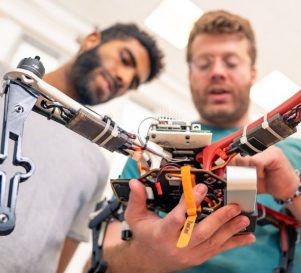Spacecraft formation and cluster flight control have seen growing interest in the last decade. However, the problem of finding the optimal debris collision avoidance maneuver for a member of a cluster has received little attention. Our work explores novel optimization methods supporting the calculation of a debris evasive maneuver for a satellite which is a member of a cluster. These include an improvement to the calculation of Time of Closest Approach (TCA), a new method for calculating the maximum distance between orbiting objects and improvements to the calculation of optimal debris avoidance maneuvers.
Satellite Collision Awareness and Avoidance
Light refreshments will be served before the lecture










